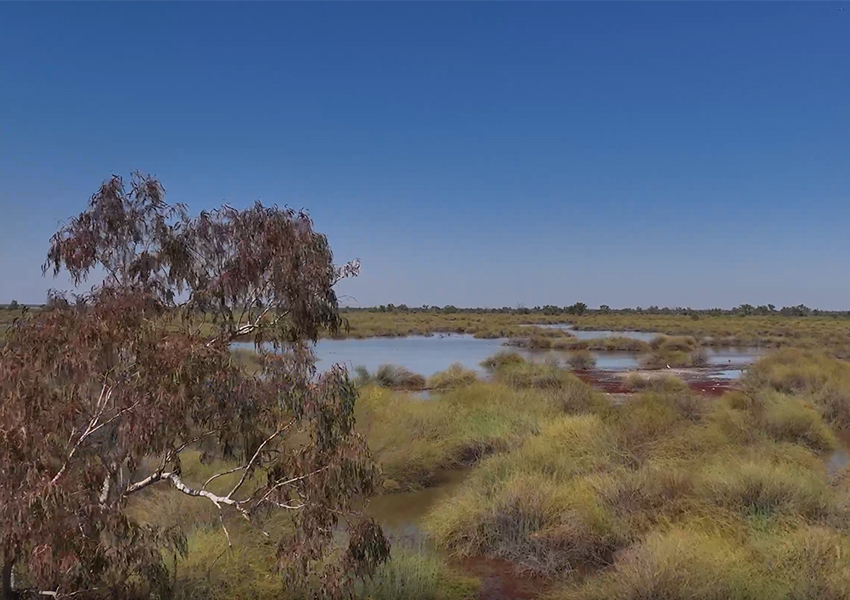- Home
- News Stories
- Protecting Dharriwaa: Eastern Australia Agriculture’s role in protecting biodiversity
Protecting Dharriwaa: Eastern Australia Agriculture’s Role in Biodiversity
Eastern Australia Agriculture is working to protect the biodiversity of Dharriwaa (Narran Lakes) by collaborating with the Commonwealth Environmental Water Holder (CEWH) to release water from farm storage, enabling one of Australia’s most important waterbird breeding sites to thrive.
Scott Balsillie, Chief Operations Officer of Eastern Australia Agriculture and this year’s Cotton Grower of the Year, is at the heart of these efforts. Scott, who takes pride in growing some of the world’s best quality cotton, emphasised the dual role cotton growers can play in both agriculture and environmental stewardship. “I feel very proud to grow some of the best quality cotton fibre in the world with some of the best water use efficiency, and also to be able to supply water back to the environment to have amazing outcomes like we have here now,” he said.
Narran Lakes, recognised under the Ramsar Convention as a wetland of international importance, is a waterbird breeding site of international significance. The birds that breed here, including pelicans, disperse across the country. However, sustaining this breeding requires careful water management, particularly during dry periods.

In 2023, as the lakes began to dry up, Eastern Australia Agriculture released water, which the CEWH had purchased under a grant agreement, from its Clyde farm to ensure that fledgling birds at Dharriwaa had enough water to grow and fly. This helped prevent the abandonment of nests and allowed young birds to move on to other water sources across Australia. This was the second major water release, following a similar commercial arrangement with the CEWH in 2020 after a prolonged drought.
For Scott, the initiative aligns with Eastern Australia Agriculture’s commitment to environmental, social, and governance (ESG) principles. The upcoming national field day in March 2025 will highlight how ESG works within their business and across the broader Australian cotton industry.
This project underscores how cotton production can go beyond just growing a crop—it can play a vital role in protecting ecosystems like Dharriwaa. Through innovative water management, Eastern Australia Agriculture is helping to ensure that the wetlands continue to thrive, supporting both biodiversity and sustainable cotton production.
